Retro Replay Review
Gameplay
Samurai Shodown III builds on the series’ signature weapon-based combat by introducing two distinct fighting styles for each character: Slash and Bust. Slash mode delivers the traditional repertoire of defensive parries, counters, and energy-based special moves, while Bust mode unlocks a darker, more aggressive arsenal—often trading safety for heightened damage output. This dual-technique system encourages players to adapt their approach mid-match, weighing risk versus reward as they manage meter, tempo, and positioning.
(HEY YOU!! We hope you enjoy! We try not to run ads. So basically, this is a very expensive hobby running this site. Please consider joining us for updates, forums, and more. Network w/ us to make some cash or friends while retro gaming, and you can win some free retro games for posting. Okay, carry on 👍)
The roster of twelve returning samurai, ninjas, and supernatural warriors offers a diverse strategic landscape. From Haohmaru’s balanced swordplay to Nakoruru’s swift wind attacks supported by Shikuruu the wolf, each fighter boasts unique weapon reach and combo potential. Learning to exploit character-specific quirks—such as Genjuro’s heavy-hitting assassination style or Rimururu’s ice-infused rushes—keeps matchups fresh, while the limited stage count ensures every environment tests your footwork, spacing, and timing.
Combat pacing in Samurai Shodown III is deliberate yet punishing: landed strikes carry significant impact, and the “tiny slowdown” effect upon successful hits emphasizes the weight of each blade clash. Mastering the slight frame advantage granted by a well-timed parry or counter opens up high-damage follow-ups, rewarding precision and memorization. At the same time, the inclusion of super moves—executed when the Rage Gauge is filled—introduces thrilling comeback opportunities in clutch moments.
The game’s training and versus modes are straightforward, allowing newcomers to drill combos and seasoned veterans to hone their mind games. While there’s no extensive tutorial, the gradual complexity of the dual-mode system encourages experimentation, making practice sessions immediately gratifying. Local and arcade-style versus battles remain the core appeal, with quick rounds that transform even casual gatherings into tense, adrenaline-fueled duels.
Graphics
Visually, Samurai Shodown III departs from the series’ earlier vibrant color palette in favor of a darker, more brooding aesthetic. Character sprites are rendered with meticulous detail—each kimono fold, sword glint, and facial expression appears crisp even at full zoom. While some color tones skew muted, this choice reinforces the game’s grim narrative backdrop and highlights the contrast between innocent heroes and the malevolent demon Zankuro.
Background stages are richly illustrated, drawing inspiration from feudal Japan’s misty forests, moonlit shrines, and war-torn castles. Subtle animations—such as drifting fog or fluttering lanterns—imbue the arenas with atmosphere, making every fight feel like part of a living, ancient world. Occasional scene transitions, like the flicker of a shrine’s torii gate opening or distant temple bells, punctuate victory screens and deepen immersion.
Character animations flow smoothly through attack wind-ups, parries, and super move cinematics. The weighty impact of a well-timed slash is made palpable by brief camera shakes and stylized flash effects. Bust mode alterations often include darker costumes or color swaps, offering visual variety and a clear in-match indicator of your chosen style. Though the frame rate dips slightly in crowded super sequences, these moments are rare and seldom detract from the overall presentation.
On hardware from its original release era, Samurai Shodown III remained one of SNK’s most polished offerings. Emulated versions preserve the pixel integrity and vibrant shading, ensuring that contemporary players experience the title as intended. Overall, the graphical package strikes a compelling balance between aesthetic grit and technical finesse.
Story
At its narrative core, Samurai Shodown III pits twelve elite warriors against the demon Zankuro Minazuki—a once-human swordsman now possessed by a malevolent force. The campaign premise sets a grim tone: Zankuro’s merciless slaughter of innocents, the haunting cries of a baby he cannot bear to harm, and his vow to only strike those who wield the sword. This moral inversion—slayer turned selective hunter—provides a chilling catalyst for each character’s personal vendetta.
Individual character arcs intertwine with the central plot in distinct ways. Amakusa Shiro Tokisada seeks redemption through heavenly sacrifice; Basara the Executioner returns from beyond for vengeful justice; and Hanzo Hattori strides from the shadows, urging death to release him from life. Whether driven by compassion (Haohmaru’s promise to an orphaned boy), rivalry (Genjuro’s thirst to surpass his former comrade), or duty (Ukyo’s quest to avenge his slain students), every samurai’s confrontation carries emotional weight.
While the game’s story mode consists largely of text-based dialogue and static illustrations, each character’s ending scene delivers satisfying closure. You witness the aftermath of Zankuro’s downfall filtered through your warrior’s perspective—from contemplative serenity in Nakoruru’s forest grove to Rimururu’s icy lament at a frostbitten battlefield. Though brevity limits deep narrative exploration, the evocative writing and art direction evoke a mythic tapestry that enriches the combat.
For players seeking a purely mechanical fighting experience, the lore provides flavorful context without demanding full attention. Yet for those intrigued by the demon’s dark influence and the samurai’s code of honor, the interwoven stories offer motivation to master every fighter and uncover the game’s multiple endings.
Overall Experience
Samurai Shodown III: Blades of Blood remains a standout entry in the classic weapon-based fighting genre. Its dual Slash/Bust system introduces strategic depth that rewards both methodical defense and aggressive offense. Matches feel weighty and consequential, with each blade clash carrying tangible impact. Casual players will appreciate the accessible controls and clear dive into feudal duels, while competitive enthusiasts can explore advanced parry timings and combo routes.
The game’s moody visuals, atmospheric stages, and thematic soundtrack coalesce to create an immersive feudal Japan soaked in supernatural dread. Though the story mode relies on text and still art, the rich character motivations and demon-slayer premise successfully drive progression. Unlocking each warrior’s ending fosters replayability, and the variety of playstyles ensures no two fights feel the same.
Whether you’re a veteran of SNK’s classic fighters or a newcomer curious about historical sword duels, Samurai Shodown III delivers an engaging package. Its blend of deliberate pacing, strategic mode selection, and distinctive character designs make every session memorable. Even decades after its original arcade release, Blades of Blood stands as a testament to the enduring appeal of high-stakes, weapon-centric combat.
In sum, Samurai Shodown III is more than a historical footnote—it’s a masterclass in balancing accessibility with tactical depth, set against a hauntingly beautiful feudal backdrop. For anyone seeking a fighting game that marries visceral swordplay with a compelling demon-hunting narrative, this title remains a must-play classic.
 Retro Replay Retro Replay gaming reviews, news, emulation, geek stuff and more!
Retro Replay Retro Replay gaming reviews, news, emulation, geek stuff and more!
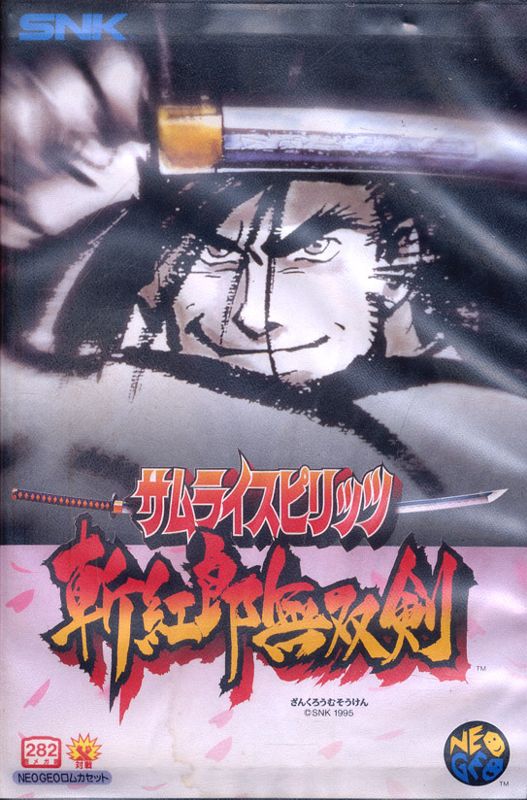
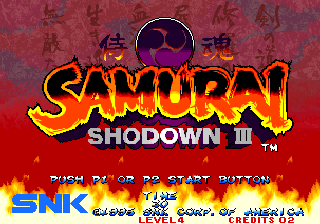
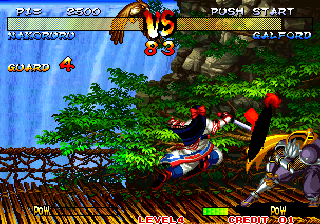
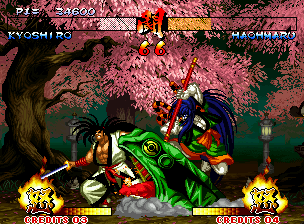

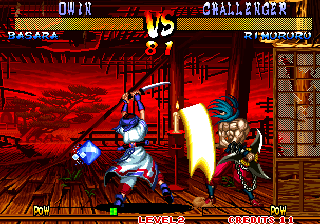


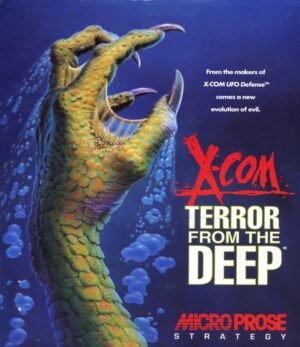
Reviews
There are no reviews yet.